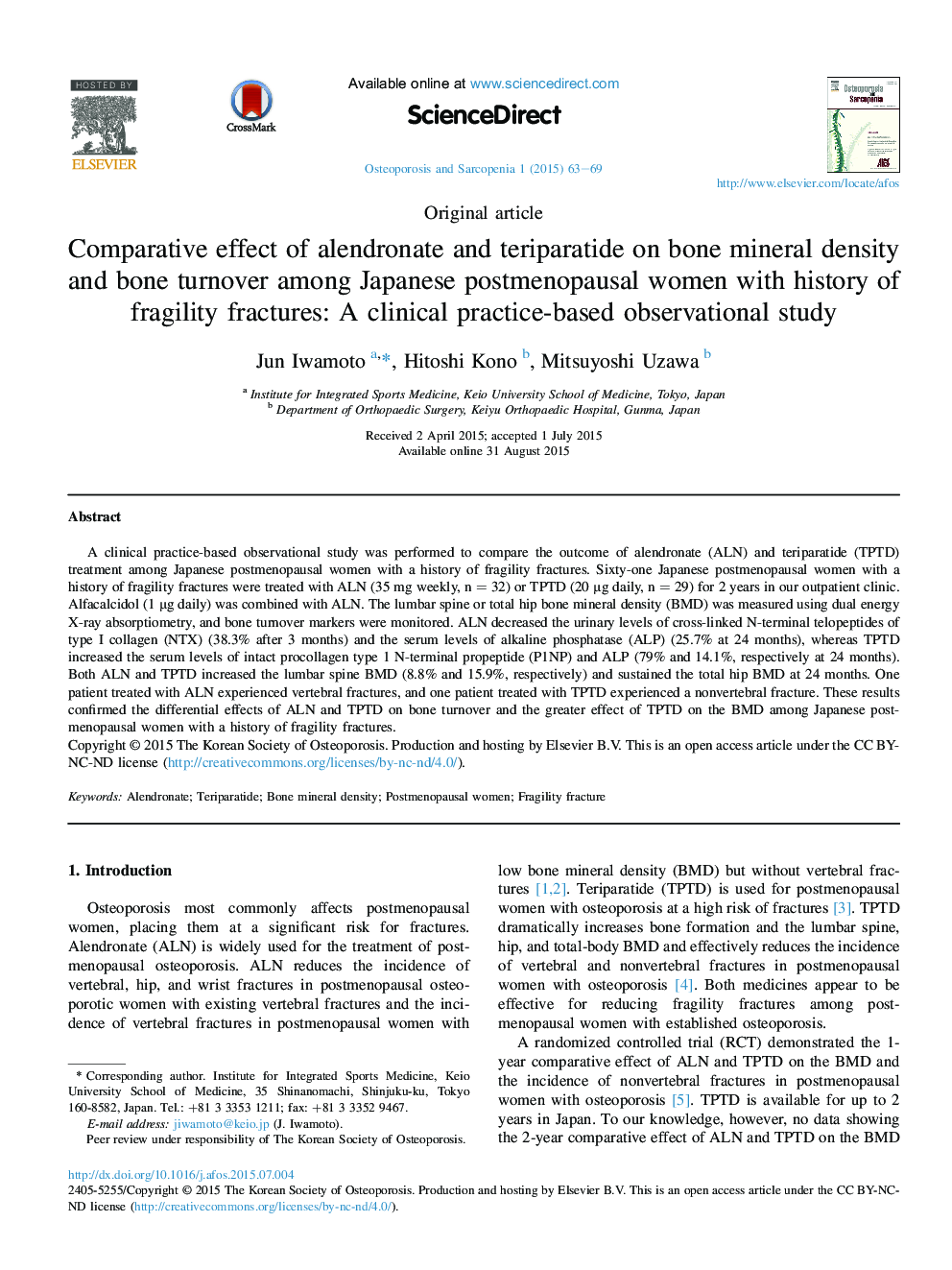| Article ID | Journal | Published Year | Pages | File Type |
|---|---|---|---|---|
| 3277972 | Osteoporosis and Sarcopenia | 2015 | 7 Pages |
A clinical practice-based observational study was performed to compare the outcome of alendronate (ALN) and teriparatide (TPTD) treatment among Japanese postmenopausal women with a history of fragility fractures. Sixty-one Japanese postmenopausal women with a history of fragility fractures were treated with ALN (35 mg weekly, n = 32) or TPTD (20 μg daily, n = 29) for 2 years in our outpatient clinic. Alfacalcidol (1 μg daily) was combined with ALN. The lumbar spine or total hip bone mineral density (BMD) was measured using dual energy X-ray absorptiometry, and bone turnover markers were monitored. ALN decreased the urinary levels of cross-linked N-terminal telopeptides of type I collagen (NTX) (38.3% after 3 months) and the serum levels of alkaline phosphatase (ALP) (25.7% at 24 months), whereas TPTD increased the serum levels of intact procollagen type 1 N-terminal propeptide (P1NP) and ALP (79% and 14.1%, respectively at 24 months). Both ALN and TPTD increased the lumbar spine BMD (8.8% and 15.9%, respectively) and sustained the total hip BMD at 24 months. One patient treated with ALN experienced vertebral fractures, and one patient treated with TPTD experienced a nonvertebral fracture. These results confirmed the differential effects of ALN and TPTD on bone turnover and the greater effect of TPTD on the BMD among Japanese postmenopausal women with a history of fragility fractures.
